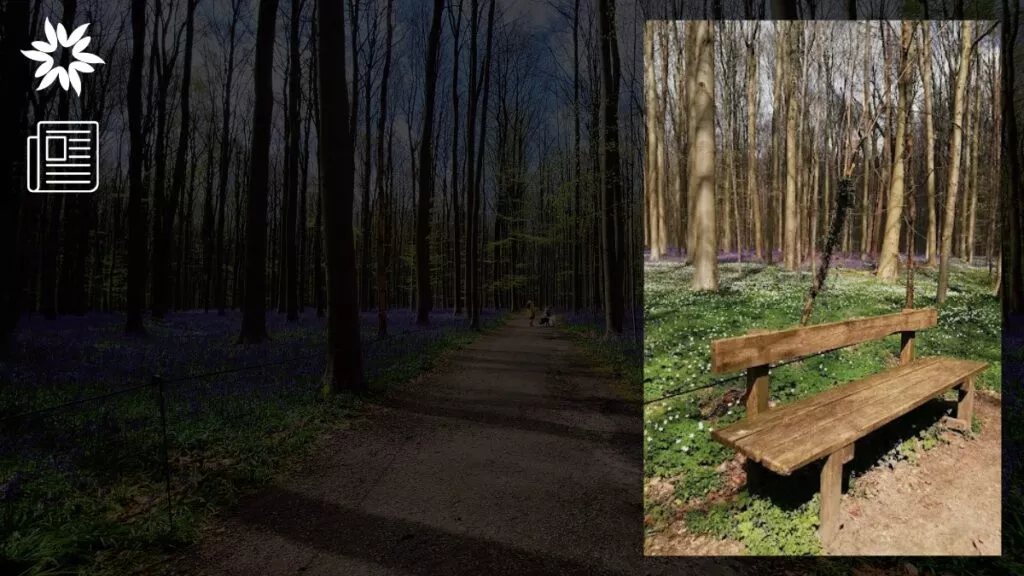Spain seriously has it all—beaches, lively cities, deep history, fantastic food, and a super welcoming culture.
But there’s no denying that figuring out where to start can be overwhelming, with so much to see and do.
However, you don’t have to worry about that—we’ll walk you through everything you need to know to make your trip to Spain unforgettable.
So, let’s get into what makes Spain an incredible place to visit. By the time we’re done, you’ll be ready to start packing your bags!
Key Takeaways
- The best time to visit Spain depends on what you want to do. Spring and early autumn offer great weather without the crowds, while summer is perfect for beach lovers.
- Whether you love beaches, history, food, or festivals, Spain provides a bit of everything, making it an ideal destination for any traveler.
- To get the most out of your trip, take note of the visa requirements, safety tips, and the best places to visit in Spain.
Best Time to Visit Spain
When to visit Spain really depends on the type of experience you’re looking for and the region you plan to explore.
Spain has something cool going on in every season, but here’s a simple guide to help you figure out the best time for your trip:
Spring (March to May)
Spring is a fantastic time to visit Spain. The weather is great, especially in April and May, making it perfect for things like hiking, sightseeing, and hitting up festivals.
If you’re there in March, don’t miss the Las Fallas Festival in Valencia—be prepared to be stunned by the fireworks and parades.
And, by April, you can check out the Feria de Abril in Seville, where you’ll get a real taste of Spanish culture with flamenco, bullfighting, and amazing food.
Summer (June to August)
Summer is the high season for tourists in Spain, especially in July and August. The beaches on the Costa del Sol, Costa Brava, and the Balearic Islands are packed with people enjoying the sun.
If you’re planning to visit cities like Madrid or Seville, brace yourself for some serious heat—over 90°F (32°C).
But it’s worth saying that if you like nightlife and summer festivals, this is the time to go.
Autumn (September to November)
Early autumn, particularly September and October, is another excellent time to explore Spain. The weather is cooler, making it comfortable to visit both the coast and inland spots.
It’s also harvest season, so if you’re into wine, this is the perfect time to visit regions like Rioja. Plus, plenty of cultural festivals are still going on, and the summer crowds have thinned out.
Fun Fact: Did you know that Spain is home to some of the best wineries in the world?
Winter (December to February)
Winter in Spain is pretty mild compared to other parts of Europe, especially south of Andalusia. It’s a quieter time to visit, with fewer tourists and better deals.
So if you want to explore the culture without the crowds, this is undeniably the best time to visit.
Did we mention you can ski in Spain? You can head to the Sierra Nevada mountains if that’s up your alley.
And for the holidays, cities like Madrid and Barcelona are beautifully decorated, with festive events like Three Kings Day in January adding to the cheer.
Visa Requirements for Spain Travelers
Before packing your bags for Spain, it’s important to know what kind of visa you’ll need to enter the country. Of course, the visa requirements can vary depending on where you’re from and how long you plan to stay.
Here’s a quick guide to help you figure out what you’ll need for a smooth trip.
EU, EEA, and Swiss Citizens
If you’re from the European Union (EU), European Economic Area (EEA), or Switzerland, you don’t need a visa to enter Spain. Just bring your valid passport or national ID card.
However, depending on your reason for being there, you might need to register with the local authorities to stay longer than 90 days.
Non-EU Citizens
For travelers from outside the EU, the visa rules vary based on where you’re from:
- Visa Exemption: If you’re from a country with a visa-free agreement with the Schengen Area, like the United States, Canada, or Australia, you can enter Spain without a visa for short stays (up to 90 days in 180 days).
But a heads up: Starting in 2024, you’ll need to apply for an ETIAS (European Travel Information and Authorization System) visa waiver before your trip.
- Schengen Visa: If your country does not have a visa-free agreement, you must apply for a Schengen visa. This lets you stay in Spain and other Schengen countries for up to 90 days in a 180-day period.
To get this visa, you’ll need to provide documents such as a valid passport, proof of financial means, travel insurance, and your travel itinerary. The fee is usually around €80 for adults.
- Long-Stay Visas: Planning to stay in Spain for more than 90 days for study, work, or to be with family? You’ll need to apply for a long-stay visa. This process requires more paperwork and might even involve an interview at a Spanish consulate.
Top Destinations and Activities in Spain
Spain is packed with incredible places to visit and things to do, whether exploring vibrant cities, relaxing on sunny beaches, or diving into rich history and culture.
To help you plan your adventure, here’s a rundown of the best places to visit in Spain and must-do activities that should be on your list.
1. Barcelona
Barcelona is a must-visit city in Spain, known for its modernist and gothic architecture, vibrant cultural scene, and beautiful beaches.
Barcelona’s streets are filled with works by Antoni Gaudí, whose surreal, nature-inspired designs have become iconic city symbols.
What to Do:
- Sagrada Familia: Start your trip by visiting Gaudí’s most famous work, the Sagrada Familia. This basilica has been under construction since 1882 and is a masterpiece of modernist architecture. The intricate details inside and out will leave you in awe.
- Park Güell: Another of Gaudí’s creations, this public park offers whimsical designs, colorful mosaics, and stunning city views. So, it’s a great place for a relaxed stroll.
- La Rambla: Walk along this famous street that runs through the heart of Barcelona. You’ll find street performers, shops, cafes, and the bustling La Boqueria Market, where you can sample local delicacies.
- Barceloneta Beach: Spend some time at Barceloneta, the city’s main beach. Whether you want to swim, sunbathe, or try some water sports, this is the place to do it.
- Gothic Quarter: Wander through the narrow, winding streets of the Gothic Quarter. This area is full of history, with buildings dating back to medieval times. Oh, and don’t miss the Barcelona Cathedral!
2. Madrid
Next up, we have beautiful Madrid. It’s the capital and has everything you could want in a European city—history, culture, fantastic food—you name it!
What to Do:
- Prado Museum: Home to one of the finest collections of European art, the Prado Museum is a must-visit. It features works by Goya, Velázquez, and other masters.
- Royal Palace: Explore the Royal Palace, the official residence of the Spanish Royal Family. Though they no longer live here, the palace is open to the public and displays stunning rooms and artwork.
- Retiro Park: Take a break from the hustle and bustle of the city at Retiro Park. You can rent a rowboat on the park’s lake or relax on the lawns.
- Puerta del Sol: This bustling square is the symbolic center of Madrid and a great spot to people-watch. It’s also home to the famous clock that marks the countdown to the New Year.
- Tapas Tour: Experience Madrid’s culinary scene with a tapas tour. Hop from bar to bar, sampling small plates of delicious Spanish food, from jamón ibérico to patatas bravas.
3. Seville
Seville, the capital of Andalusia, is a city steeped in history and culture. It’s known for its flamenco dancing, Moorish architecture, and vibrant festivals.
What to Do:
- Alcázar of Seville: Visit the Alcázar, a stunning palace with intricate Moorish designs, beautiful gardens, and a rich history. It’s still used as a royal residence today.
- Seville Cathedral: This is the largest Gothic cathedral in the world and the final resting place of Christopher Columbus. Climb the Giralda Tower for panoramic views of the city.
- Plaza de España: A visit to Seville isn’t complete without seeing the Plaza de España, a grand square with a large fountain, beautiful bridges, and tiled alcoves representing each Spanish province.
- Flamenco Show: Experience the passion of flamenco at one of Seville’s many tablaos (flamenco venues). The music, singing, and dancing will give you a deep appreciation for this art form.
- Semana Santa and Feria de Abril: If you visit in spring, you can experience Seville’s famous festivals. Semana Santa is a week of religious processions, while Feria de Abril is a week-long fair with dancing, bullfighting, and traditional costumes.
4. Granada
Granada is a city where the Moorish influence is still strongly felt, especially in its architecture and culture.
Granada, located in the Sierra Nevada mountains, is most famous for the Alhambra, a palace and fortress complex that is a UNESCO World Heritage site.
What to Do:
- Alhambra: The Alhambra is a must-see in Granada. This stunning complex includes the Nasrid Palaces, the Generalife Gardens, and the Alcazaba fortress. The intricate Islamic art and architecture will leave you speechless.
- Albaicín: Wander through the Albaicín, the old Moorish Quarter of Granada. The narrow, winding streets are full of whitewashed houses, small shops, and cafes, and there are spectacular views of the Alhambra.
- Sacromonte: Visit Sacromonte, known for its cave houses and as the birthplace of flamenco in Granada. You can watch a traditional flamenco performance in one of the caves.
- Granada Cathedral: This Renaissance cathedral is one of the most impressive in Spain. Nearby, you can visit the Royal Chapel, where the Catholic Monarchs Ferdinand and Isabella are buried.
- Sierra Nevada: If you enjoy outdoor activities, head to the Sierra Nevada mountains. In winter, you can ski, and in summer, the area offers excellent hiking trails with breathtaking views.
5. Valencia
Valencia, located on Spain’s southeastern coast, is known for its futuristic City of Arts and Sciences, a thriving food scene, and miles of beaches.
What to Do:
- City of Arts and Sciences: This futuristic complex is one of Valencia’s most famous landmarks. It includes a planetarium, an IMAX theater, a science museum, and Europe’s largest aquarium.
- Valencia Cathedral: Visit the Valencia Cathedral, where you can see what is claimed to be the Holy Grail. Climb the Miguelete Tower for great views of the city.
- Turia Gardens: Once a riverbed, Turia Gardens is now a long, green park that runs through the city. It’s perfect for a walk or bike ride, and it leads to the City of Arts and Sciences.
- Beaches: Spend a day at one of Valencia’s beautiful beaches, like Malvarrosa Beach, just a short tram ride from the city center.
- Paella: Valencia is the birthplace of paella, so try this famous dish while you’re here. Many restaurants serve the traditional version with rabbit and chicken.
6. Bilbao
Bilbao, located in the Basque Country, has transformed from an industrial city into a cultural hub known for its modern architecture, museums, and food.
What to Do:
- Guggenheim Museum: The Guggenheim Museum is Bilbao’s most famous attraction. The building is a work of art, and contemporary art exhibitions are held inside.
- Casco Viejo: Explore Bilbao’s old town, known as Casco Viejo. It’s full of narrow streets, historic buildings, and lively bars where you can try pintxos, the Basque version of tapas.
- Ribera Market: Visit Ribera Market, one of the largest covered markets in Europe. You can shop for local products or enjoy a meal in one of the market’s restaurants.
- Zubizuri Bridge: Walk across the Zubizuri Bridge, a modern pedestrian bridge designed by Santiago Calatrava. It offers excellent views of the city and the river.
- Bilbao Fine Arts Museum: This museum houses a wide range of medieval and contemporary artworks, making it a must-visit for art lovers.
7. Mallorca
Mallorca, the largest of the Balearic Islands, is filled with stunning beaches, charming villages, and incredible nightlife—a prime destination for relaxation and adventure.
What to Do:
- Beaches: Mallorca boasts over 300 beaches. Some of the most popular include Es Trenc, a beautiful stretch of white sand, and Cala d’Or, known for its crystal-clear waters.
- Palma: Explore the capital city of Palma, where you can visit the stunning Palma Cathedral and Bellver Castle and stroll through the charming old town.
- Sierra de Tramuntana: This mountain range is perfect for hiking, offering trails with breathtaking views. The area is also dotted with picturesque villages like Sóller and Valldemossa.
- Cuevas del Drach: Visit these impressive caves, which include one of the largest underground lakes in the world. You can ride a boat inside the caves and enjoy a classical concert.
- Nightlife: Mallorca is known for its lively nightlife, especially in areas like Magaluf and Palma. Whether you’re looking for beach bars, nightclubs, or live music, you’ll find plenty of options.
8. San Sebastián
San Sebastián, also known as Donostia, is a beautiful coastal city in the Basque Country, renowned for its stunning beaches, world-class cuisine, and vibrant cultural scene.
Along the Bay of Biscay, San Sebastián is the perfect destination for those who enjoy both natural beauty and write home about kind of food.
What to Do:
- La Concha Beach: Often cited as one of the best city beaches in the world, La Concha Beach offers a crescent-shaped bay with golden sand and clear waters. It’s a great place to relax, swim, or stroll along the promenade.
- Monte Urgull: For panoramic views of the city and the bay, hike up Monte Urgull. The summit is home to a historic fortress and a giant statue of Christ, providing scenic beauty and a touch of history.
- Pintxos Tour: San Sebastián is famous for its pintxos, the Basque version of tapas. Explore the old town, known as Parte Vieja, and hop from bar to bar, sampling these delicious small plates.
- San Telmo Museum: Learn about Basque history, culture, and art at the San Telmo Museum, housed in a 16th-century convent. The museum offers a fascinating look into the region’s rich heritage.
- Zurriola Beach: Known for its strong waves, Zurriola Beach is the perfect spot for surfing. It’s also a great place to watch the sunset while enjoying the lively atmosphere.
9. Toledo
Toledo, known as the “City of Three Cultures,” is a UNESCO World Heritage Site with a rich history shaped by Christian, Muslim, and Jewish influences.
Just an hour from Madrid, Toledo is worth the trip. The winding streets and ancient buildings are like something out of a storybook.
What to Do:
- Alcázar of Toledo: This imposing fortress sits atop Toledo’s highest point and has been a significant military site throughout history. Today, it houses the Army Museum and offers spectacular city views.
- Toledo Cathedral is one of Spain’s most magnificent Gothic structures. It is known for its elaborate interior, including the stunning altarpiece and choir stalls. Don’t miss the sacristy, which houses works by El Greco, Goya, and other famous artists.
- Jewish Quarter: Explore the Jewish Quarter of Toledo, where you can visit the El Tránsito Synagogue and the Sephardic Museum, which provide insights into the history of Jews in Spain.
- El Greco Museum: Dedicated to the famous painter who spent much of his life in Toledo, the El Greco Museum showcases many of his works and offers a look into his life and artistic legacy.
- Monastery of San Juan de los Reyes: This stunning Gothic monastery, built by the Catholic Monarchs, features intricate architecture and beautiful cloisters. It’s a peaceful place to reflect and enjoy the artistry of the past.
10. Cordoba
Cordoba is a city in Andalusia known for its rich history, particularly from the Islamic period of Spain.
Once the capital of the Umayyad Caliphate, Cordoba has been shaped by centuries of different cultures, and its stunning architecture proves it.
What to Do:
- Mezquita-Catedral: The Great Mosque of Cordoba, now a cathedral, is one of Spain’s most stunning examples of Islamic architecture. The vast prayer hall with its iconic red-and-white arches is breathtaking, and the cathedral’s Christian additions create a fascinating blend of cultures.
- Alcázar de los Reyes Cristianos: This fortress-palace was once the residence of Ferdinand and Isabella. Explore the beautiful gardens, historic rooms, and ancient Roman mosaics.
- Roman Bridge: Cross the Guadalquivir River on this ancient Roman bridge, which offers beautiful city views and is particularly stunning at sunset.
- Jewish Quarter: Wander through the narrow streets of the Jewish Quarter, home to one of the few remaining synagogues in Spain. This area is charming, with its whitewashed buildings and small courtyards filled with flowers.
- Patios of Cordoba: Visit Cordoba in May to experience the Patios Festival, where locals decorate their courtyards with flowers in a vibrant display of color and tradition. Many of these patios are open to the public for viewing.
11. Ibiza
You’ve probably heard of Ibiza, one of the Balearic Islands practically synonymous with epic parties. But there’s so much more to this place than just nightlife. It has stunning natural beauty, charming villages, and an intriguing history.
Ibiza is a great shout if you’re looking to dance till dawn or chill out on a secluded beach.
What to Do:
- Clubbing: Ibiza is home to some of the world’s most famous nightclubs, such as Pacha and Amnesia. If you’re a fan of electronic music, this is the place to be, with top DJs performing throughout the summer.
- Beaches: Beyond the nightlife, Ibiza boasts beautiful beaches with crystal-clear waters. With its turquoise waters, Cala Comte and Ses Salines, surrounded by a nature reserve, are particularly popular.
- Dalt Vila: Explore the old town of Ibiza, Dalt Vila, a UNESCO World Heritage site. The cobblestone streets, ancient walls, and panoramic views from the top make this a must-visit.
- Hippie Markets: Visit one of Ibiza’s famous hippie markets, such as Las Dalias or Punta Arabí, where you can find handmade crafts, jewelry, and local art.
- Boat Trips: Take a boat trip around the island or to the nearby island of Formentera. The clear waters are perfect for snorkeling, and the views of Ibiza from the sea are stunning.
12. Costa del Sol
The Costa del Sol in southern Spain is known for its sunny weather, beautiful beaches, and vibrant seaside towns.
This region is a favorite destination for those looking to relax by the sea and enjoy the Mediterranean climate.
What to Do:
- Beaches: The Costa del Sol is home to many beautiful beaches, from the lively Playa de la Malagueta in Málaga to the more tranquil Playa de Maro near Nerja. Whether you’re into watersports or want to sunbathe, there’s a beach for you.
- Málaga: Visit the city of Málaga, the birthplace of Pablo Picasso. Explore the Picasso Museum and the historic Alcazaba fortress, and enjoy the city’s lively nightlife.
- Marbella: Marbella is known for its luxury resorts, upscale shopping, and beautiful old town. Stroll through the old town’s narrow streets, visit Orange Square, and dine in one of the many high-end restaurants.
- Ronda: Take a day trip to Ronda, one of the most beautiful towns in Spain. The town is famous for its dramatic cliffside location and the Puente Nuevo, a bridge that spans a deep gorge.
- Golfing: The Costa del Sol is also known as the “Costa del Golf” due to its many golf courses. If you’re a golf enthusiast, this is the perfect place to play a few rounds in the sunshine.
Spain’s Must-Try Foods and Flavors
When visiting Spain, one of the best parts of your trip will be the food.
Spain’s food scene is legendary, and for good reason. From the bustling tapas bars of Madrid to the sun-drenched seafood restaurants on the coast, every meal is a chance to taste the unique flavors and traditions that make Spanish cuisine special.
Here are some of the must-try dishes and food experiences you shouldn’t miss:
1. Paella
Paella is probably Spain’s most famous dish, and it hails from Valencia. This flavorful rice dish is traditionally cooked over an open fire and comes in various styles.
The classic version mixes chicken, rabbit, and sometimes snails, while seafood paella is loaded with shrimp, mussels, and squid. The best part is the crispy rice layer at the bottom of the pan, which is known as “socarrat.”
2. Tapas and Pintxos
Tapas are small dishes meant to be shared and a staple of Spanish culture. You’ll find all kinds of tapas across Spain, from patatas bravas (fried potatoes with spicy sauce) to gambas al ajillo (garlic shrimp).
In the Basque Country, look for pintxos, which are similar to tapas and served on skewers or small pieces of bread.
3. Jamón Ibérico
This type of cured ham is a big deal in Spain. Jamón Ibérico comes from Iberian pigs, and the meat has a rich, nutty flavor thanks to the pigs’ acorn diet.
It’s cured for up to 36 months, resulting in a melt-in-your-mouth texture, and is often served in thin slices with a glass of Spanish wine.
4. Tortilla Española
Also called a Spanish omelet, Tortilla Española is a simple yet tasty dish made with eggs, potatoes, and onions.
It’s usually served as a tapa but can also be a main dish. The secret to a perfect tortilla is the soft, tender potatoes and slightly crispy edges.
5. Pulpo a la Gallega
This dish from Galicia is made with tender octopus boiled and sprinkled with paprika, salt, and olive oil. It’s often served with boiled potatoes and is a must-try for seafood lovers.
6. Churros con Chocolate
A popular treat in Spain, Churros con Chocolate consists of fried dough pastries served with thick, rich hot chocolate for dipping. The churros are crispy on the outside and soft on the inside—comfort food at its finest.
7. Gazpacho
Gazpacho is a refreshing cold soup from Andalusia. It is typically made with tomatoes, cucumbers, bell peppers, onions, garlic, and olive oil.
It’s trendy during the hot summer months. If you like a thicker version, try salmorejo, often topped with hard-boiled eggs and jamón.
8. Cochinillo Asado
This is a specialty from Segovia and is famous all over Spain. Cochinillo Asado is a whole suckling pig, roasted until the meat is tender and the skin is crispy.
More often than not, Conchinillo Asado is served with potatoes and vegetables, making it a hearty, celebratory dish.
9. Fabada Asturiana
Fabada is a hearty bean stew from the Asturias region. It is made with white beans, chorizo, morcilla (blood sausage), and pork. This comforting dish is perfect for colder months and is often enjoyed with a glass of cider.
10. Fideuá
A cousin to paella, Fideuá is a dish from Valencia that swaps out rice for short noodles. It’s cooked similarly to paella and is typically made with seafood like fish, shrimp, and clams, all simmered in a flavorful broth.
11. Pimientos de Padrón
These small green peppers are fried and sprinkled with coarse salt. Most are mild, but occasionally, you’ll bite into one that’s quite spicy, making them a fun and tasty gamble. Pimientos de Padrón are often served as a tapa.
12. Queso Manchego
This famous cheese is made from the milk of Manchega sheep in the La Mancha region. Queso Manchego has a firm texture and a nutty flavor, and it’s often paired with jamón or olives as part of a tapas spread.
13. Montaditos
Montaditos are small sandwiches popular across Spain, especially in Madrid and Seville. They come with various fillings, including cured meats, cheese, and vegetables, so they’re perfect for a quick snack or as part of a tapas meal.
14. Chorizo
Chorizo is a spicy sausage made from pork and seasoned with paprika. It’s used in many Spanish dishes, from stews to tapas, and can be enjoyed either cooked or cured. If you’ve had chorizo before, you’ll know that it adds a punch of flavor to anything it touches.
15. Albóndigas
These Spanish meatballs are usually served in a rich tomato or almond sauce. Albóndigas are a popular tapa that you’ll find in many bars and restaurants across the country, typically made from beef or a mix of beef and pork.
16. Pan con Tomate
This simple yet delicious dish consists of toasted bread rubbed with ripe tomatoes, drizzled with olive oil, and sprinkled with salt. It’s often served for breakfast or as a tapa and is a must-try during your visit to Spain.
Safety Tips for Traveling in Spain
Before you travel to Spain, it’s good to know a few safety tips to keep your trip smooth and stress-free.
Sure, Spain is generally a safe place to visit, but like anywhere else, it helps to be aware of a few things.
Here are some easy tips to make sure you stay safe while having a fantastic time.
- Beware of Pickpockets: Pickpocketing is common in busy tourist spots like Barcelona’s Las Ramblas, Madrid’s Puerta del Sol, and crowded public transportation. Keep a close eye on your stuff, don’t carry too much cash, and use anti-theft bags.
- Trust Your Instincts: If something doesn’t feel right, trust your instincts and remove yourself. Women traveling alone should always stay alert.
- Stay Vigilant in Crowded Places: Markets, festivals, and popular tourist attractions can be hotspots for petty crime. Watch out for distractions—thieves often use them to target tourists.
- Be Aware of Common Scams: In popular tourist areas, be mindful of common scams, such as offering “gifts” like flowers or bracelets only to demand money afterward. Politely decline and walk away if approached.
- Secure Your Valuables: Use the hotel safe for your passport, extra cash, and other valuables. When you’re out, only carry what you need for the day.
- Avoid Unlicensed Taxis: Stick to official taxis with meters and a green light on the roof. In cities like Madrid and Barcelona, apps like Free Now or Uber are also good options.
- Be Cautious at ATMs: Use ATMs inside banks or in well-lit areas. Don’t withdraw large amounts of cash; always be aware of who’s around when you enter your PIN.
- Learn Basic Spanish Phrases: While many people in Spain speak English, knowing a few basic Spanish phrases can be helpful in emergencies or when you need assistance.
- Be Aware of Scams: Watch out for common scams like the “found ring” trick, fake petitions, or people offering to help with your bags to steal them. If something feels off, politely decline the help.
- Respect Local Laws and Customs: Spain has strict rules about public drinking, smoking, and noise in residential areas. Knowing the local regulations to avoid fines is a good idea.
- Emergency Numbers: The number in Spain is 112, which connects you to the police, medical services, or fire department. Always keep your hotel’s contact info and a map of the area with you.
- Watch Out for Heat: Summers in Spain can get hot. Stay hydrated, wear sunscreen, and avoid being outside during peak heat hours, usually from 12 pm to 4 pm.
Get Ready for Your Spanish Adventure—You Don’t Want to Miss This!
So you’ve heard about what Spain offers—unique places, mouth-watering food, lively festivals, and history just asking to be explored. It’s time to quit dreaming and start making it happen!
Grab your calendar, lock in some dates, and start planning. Spain is one of those places that sticks with you long after you’re gone, and there’s something here for everyone—no matter what kind of traveler you are.
Don’t let this adventure slip away. Book your trip to Spain now and get ready for a fantastic journey.
The tapas are hot, the festivals are buzzing, and stunning Spanish sunsets won’t watch themselves.
Spain is calling—answer it!
Oh, and just before you go, are you looking to explore more of Europe? If so, check out our guide to budget-friendly city breaks!








